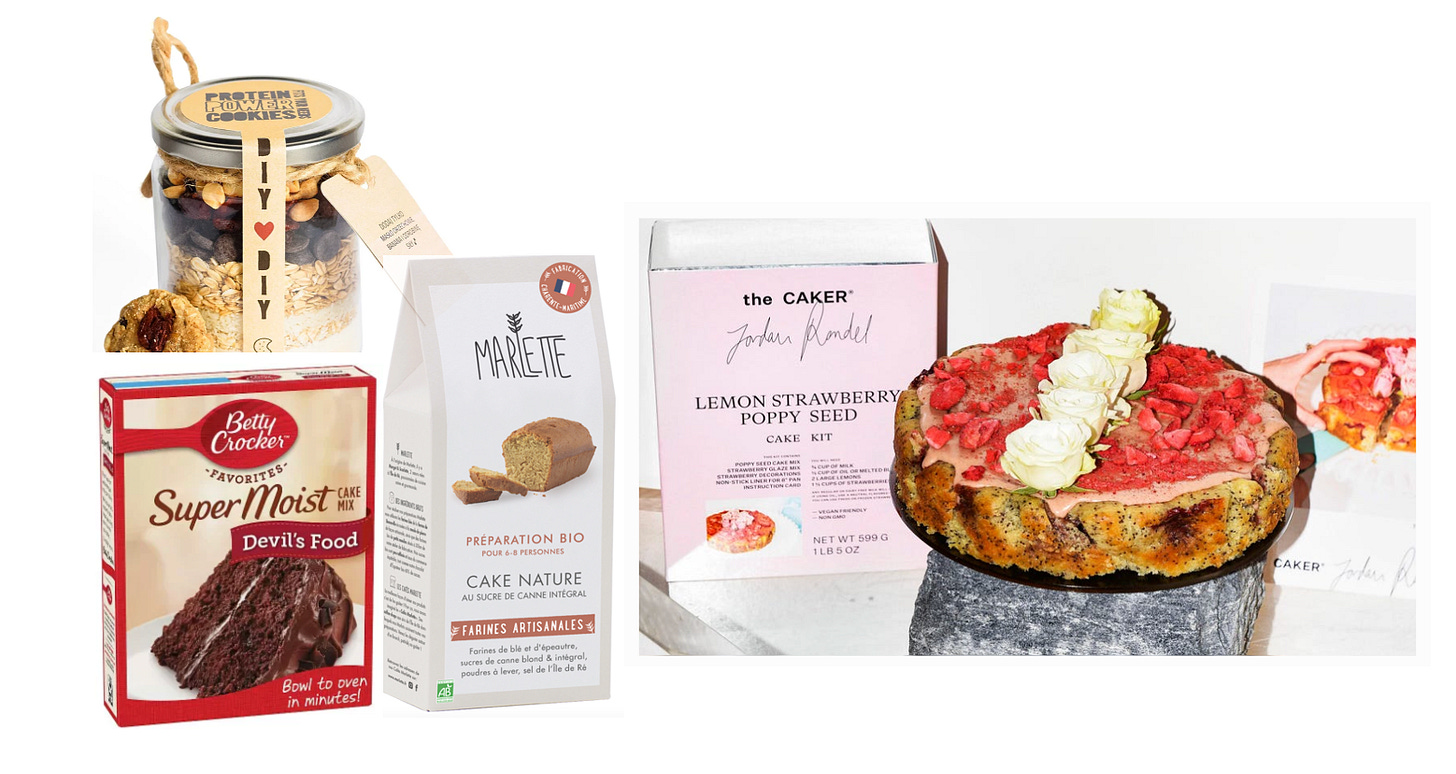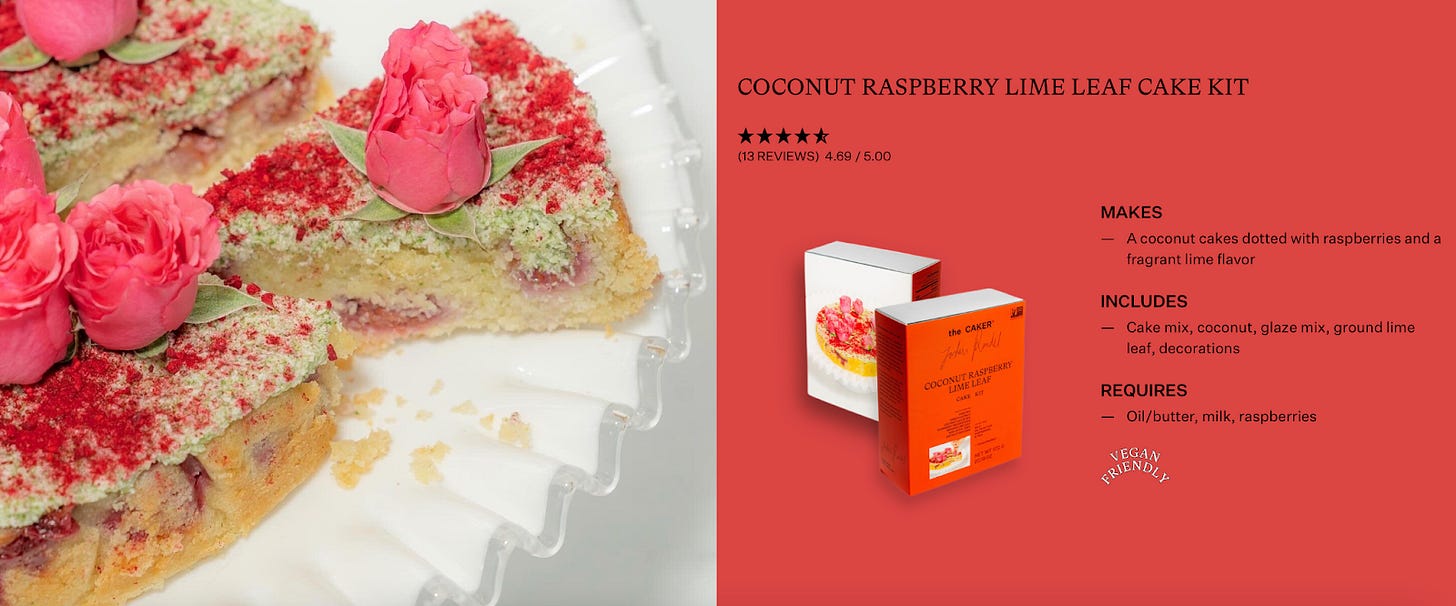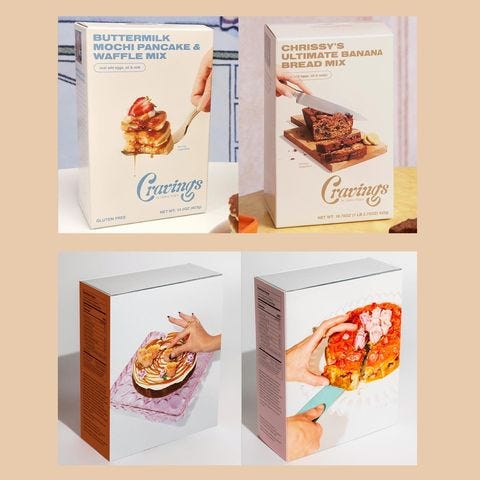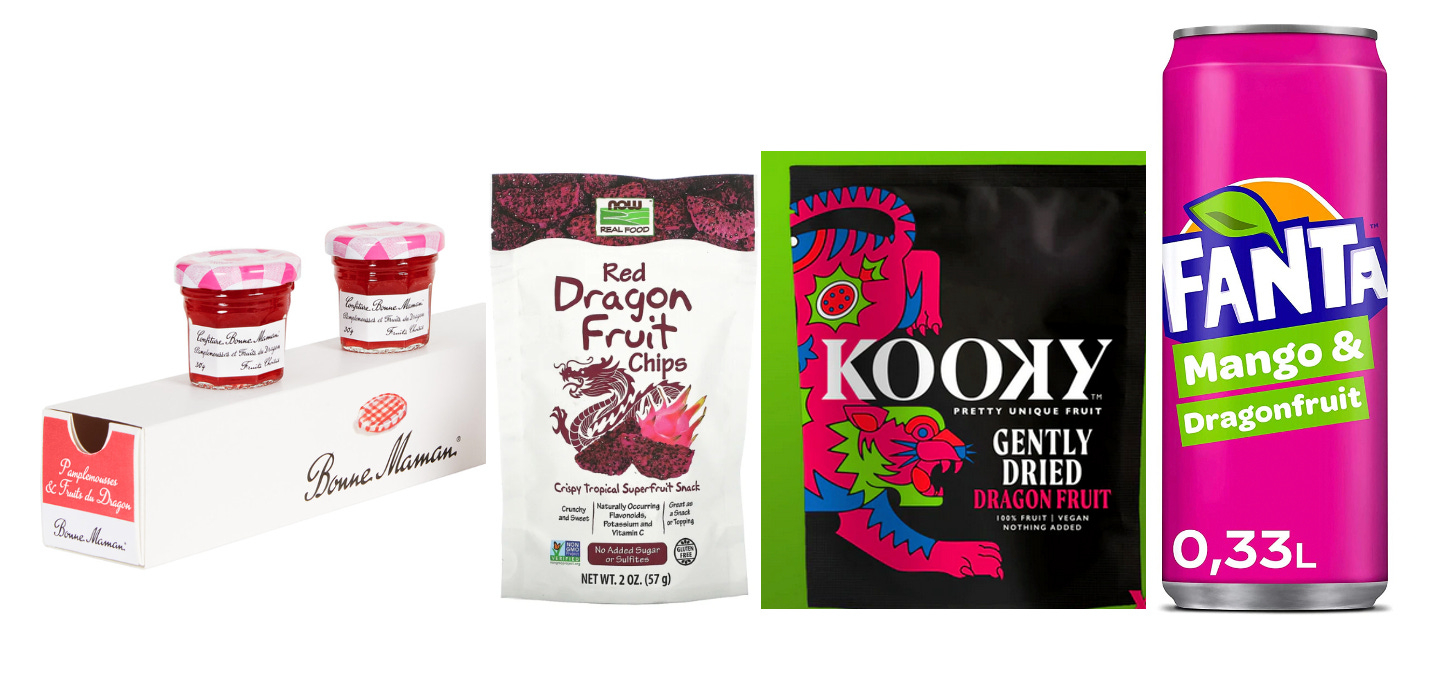Food Trends Report | Cactus Mania, 2023 Trends, Energy Efficient Kitchen, Premium Desserts…
Food Trends Report | Cactus Mania, 2023 Trends, Energy Efficient Kitchen, Premium Desserts…
In the spotlight
🔮 2023 trends (and beyond)
The year just began and now is the time to reflect on this year's trends and what’s coming next. While many of them seem to be well on their way to staying and expanding further, such as functional food, personalized nutrition, upcycling or the battle against food waste, the current economic and political context could, however, impact — or at least cause some to question — some of these trends. At a time of general inflation, will consumers continue to pay for sustainable choices, which are often more expensive? It’s an economic issue that, according to food expert Daniel Skaven Ruben, could also impact start-ups, who are facing a potential slowdown in investments…
This could be compounded by regulatory approvals for new technologies such as cultured meat and precision fermented dairy products.
For our part, here are three trends that we see taking hold.
Super Snacks. Super Culture.
According to the third edition of Mondelez's State of Snacking, the snack market has never been in better shape and looks set to expand worldwide. While 76 per cent of those surveyed say they eat different snacks than they did three years ago, 84 per cent imagine that snack choices will increase in the near future. A sense of innovation is already palpable with the rise of popcorns made from water lily seeds or cauliflower, cactus or mushroom chips, avocado puffs,... On the sweet side, functional recipes should also continue to progress with chocolates dedicated to certain hormonal conditions, allergy-friendly snacks or those enriched with collagen and gut-enhanced cookies... And what about drinks that are supposed to promote sleep, soothe the stomach or boost energy? So many "super snacks" for which the red carpet is rolled out and can be found via drops or exclusive collaborations, in next-gen vending machines or in pop-up stores of a new kind.
And you haven't seen everything, as celebrities are rushing to launch their own snacks, from Mr Beast to the Schwarzenegger family, including Chris Paul and the Jonas Brothers. It’s a craze that pushes some brands to develop marketing strategies for exclusive access to certain snacks, like Foxtrot, where some snacks are specifically available to a subscriber base. Snacks, the next unexpected alternative asset class?
Vegetables and legumes strike back.
We are looking at a paradox: while veganism and sustainable consumption styles continue to grow, several market players are declining. For example, Beyond Meat, the meat substitute expert, recently revised its revenue forecasts and announced the layoff of 19 per cent of its workforce. McDonald's, on the other hand, has stopped its American test of the McPlant Burger, which is made from a Beyond Meat vegetable patty.
The explanation could lie in the observation made by the food designer Marije Vogelzang a few years ago: many vegetarian substitutes take the form of chicken breasts, burgers, steaks, nuggets... Imitations that suffer from the comparison with the original products. According to Marije Vogelzang, new narratives need to develop to find an audience. By adjusting their marketing positioning and storytelling, vegetables and legumes could return to the forefront in their natural form. It is also an opportunity to promote little-known varieties: as the United Nations Food and Agriculture Organization (FAO) points out, of the four per cent of the 250,000 to 300,000 known plant species, only 150 to 200 are used by humans. Only three - rice, maize and wheat - contribute to nearly 60 percent of calories and proteins obtained by humans from plants. These are all avenues that are beginning to inspire certain brands, such as Primary Beans, which offers less common varieties of beans such as ojo de cabra or sangre de toro, and Heyday Canning, with its original canned foods, as well as Lentiful, which revisits lentils in a ramen style.
Regenerative Everything.
Can regenerative agriculture save the climate? One thing is certain: it is taking root almost everywhere in the world. Under the guise of stimulating soil biodiversity, we should see the development of new players throughout the production chain, whether it be tools to help farmers transition successfully or labels such as the ROC. We already wrote about Helpful Hens eggs, Vital Farms' "restorative eggs" and Moonshot’s "climate-friendly" crackers. But the phenomenon can go beyond simple branding, like the Varietal Crop Crackers: available soon, these crackers are formulated with an assortment of wheat, legumes and seeds, all planted using crop diversity methods, a technique in which crops are planted annually in a three-year cycle to support and restore nutrients to the soil and improve our environment as a whole.The result? Products marketed in different recipe variations, each one supposedly representing the crop of the season.
While legislation in favour of regenerative agriculture should develop in the coming months, movements could also be created and strengthened, like Zero Footprint , which allows restaurants to donate a percentage of their sales to finance this type of agriculture. A trend that should resonate particularly with consumers in search of hyper-physicality, eager for sylvotherapy and green retreats as remedies to the mental health issues revealed by the COVID19 crisis.
✨The voices of food design.
Francesca Zampollo, an Italian woman who is active in the world of food design, released "Food design voices 2022" last summer. The pitch? Food designers, chefs, academics, researchers, scientists and authors answer three questions: What is the relevance of food design in the current global context? What is their vision of sustainable food design? What is food design today?

Among our favourites are the works of Marta Bocos, who explores interactive gastronomy and new narratives. With "El Bocadillo del Tiempo", she uses, for example, the notion of taste to consume information, literally. The idea? To turn Barcelona's weather forecasts into sandwiches: each weather parameter is assigned to an ingredient that, depending on the forecast, is cooked in a specific way, generating different flavours, textures and combinations. Another of her projects, "Reactive Plants", aims to visualize data through elements that facilitate understanding and memorization. Here, plants are given water and light according to the stock market values, illustrating the economic health of three companies, selected by the expert, in real time.

Another strong concept comes from the Escaparatech studio and its interactive sauces. Launched at the Fruit Attraction trade show and commissioned by the asparagus producer "Centro Sur", this project is based on an original way of tasting this vegetable. Once the asparagus has been dipped in one of the sauce containers, the bowls light up to the rhythm of pulsing music. Who said eating vegetables was boring?
Strong Signals
🔌 Food in the era of energy sobriety.
In a context marked by the acceleration of climate change and geo-political conflicts, last October, the French government announced its energy sobriety plan with the objective of reducing energy consumption by 10 per cent by 2024.
Aside from the governments, giants of the food industry are also taking up the subject. Danone has just launched an energy excellence program called "Re-Fuel" to improve the energy efficiency of its sites around the world. The Finnish dairy products company Valio has made what it claims to be its "biggest investment in energy efficiency" in its Lapinlahti plant, with the aim of reducing energy consumption by more than 10 per cent. Another example is Nestlé, which has invested 2.3 million euros in a green thermal energy system to equip the chocolate factory of its subsidiary La Penilla de Cayón in Spain.
Barilla's marketing campaign to promote "passive cooking"
The subject is also being discussed on the public front. In a Facebook post published in September, physicist Giorgio Parisi — who was awarded a Nobel Prize in 2021 — sparked debate by suggesting that pasta should be cooked differently in order to save energy and money.
Approving the approach and sensing the green publicity stunt, global pasta giant Barilla has embraced this passive cooking concept intended to generate 80 per cent less CO₂. Specifically, it involves turning off the stove at the end of cooking to let the pasta finish cooking in the boiling water. Barilla, which has listed passive cooking times according to different pastas, has even developed the Passive Cooker, a device to be placed on the lid of the pan. Connected to a smartphone, it provides a notification when the pasta is ready. While the brand has developed a prototype, it distributes the Passive Cooker as an open-source project by providing design files and a list of components to purchase. Of course, only a small percentage of consumers will 3D print and assemble their own device... For everyone else, Barilla has launched the Passive Cooking Bot, a chatbot that delivers step-by-step instructions via WhatsApp.
This example illustrates the opportunity for food companies to invest in their role as media and utility brands by educating their audiences on how to consume and cook more efficiently. They may be inspired by this carbon footprint calculator for meals or this article from EDF on how to cook using less energy.
These steps also illustrate the potential changes in our kitchen equipment with, why not, new devices or gadgets to imagine or a renewed interest in some existing ones. Whether it's pure coincidence or the TikTok effect, you should know that the slow cooker, renowned to be the least energy-consuming cooking appliance, was searched for 450K on Google in October 2022 vs. 301K in October 2021, i.e., an increase of +50%. And the air fryer — less energy consuming than an oven — also continues to seduce consumers and Gen Z, as it was searched 5M times in October 2022 on Google vs. 3,4M times in October 2021, an increase of +47%.
🧁 Convenience desserts: the kit is chic.
Who hasn't already purchased a ready-to-use preparation at the supermarket where you just need to add an egg or a bit of milk, mix it and bake it? Industrial food, of course, but very practical, with a little touch of FIY (Finish-it-yourself) that allows even the most unskilled cooks to get by easily. The problem? Compositions that are not always clean, often not adapted to specific diets (allergen-free, keto, gluten-free, etc.) or, quite simply, the final rendering is rather low-key... So many elements that have prompted several entrepreneurs to challenge this product category.
Since 2010, the French brand Marlette, founded by two sisters — one an agri-food engineer and the other a graduate of the Vatel hotel school — who wanted to highlight preparations where "the taste, nutritional values, origin and method of cultivation of ingredients" are respected. Organic or gluten-free versions are available thanks to wholemeal rice and arrowroot flours. All the raw materials are sourced locally. A few years later, other brands such as Max de Génie continued this trend by specializing in preparations with no added sugar or low glycemic index.
At the same time, we’ve also witnessed the rise of cookie jars and other jars containing turnkey mixtures with an advantageous aesthetic, in a layering style. But in terms of glamour, we are still far from "The Caker" phenomenon. Based in New Zealand, the blogger Jordan Rondel, passionate about pastry, decided to diversify her business with ready-to-use preparations. On the menu: sourcing, quality and originality. In addition to the basic mixture, the kits are composed of decorations and icing to create absolutely stunning cakes. For the past few years, the brand has been doing unexpected collaborations and, in 2020, the brand expanded to the American market. Other examples: the French Cake Master — which financed its launch via the French crowdfunding platform Ulule — or Cravings, the kits driven by the American Chrissy Teigen ... which strangely resemble those of The Caker, with whom the supermodel had also collaborated a few months earlier, attracting the wrath of internet users and the founder of The Caker herself.
Weak signals
🌵 Cactus Mania.
Among almost 2,000 species of cacti referenced around the world, some have the particularity of being consumed either for their fruit, or for the plant itself, or for both. Popular for centuries in arid regions, this family of plants is now gaining visibility thanks to the consumer craze for world food and more sustainable options.
Back in 2017, the Food and Agriculture Organization of the United Nations published a plea for cacti, particularly the cactus pear. Its advantages? Its ability to "strengthen the resilience of populations facing situations of drought, high temperatures and degraded soils" and to "help limit greenhouse gas emissions by reducing methanogenesis in ruminants when integrated into their diet." Also known as nopal, this cactus native to Mexico is also present in the Mediterranean basin, thus feeding the "local exotic" trend. In short, a sustainable and ecological plant that is also a future choice for food and forage. And that's not all. It is also a plant known for its medicinal properties: rich in antioxidants, its fibre content has an appetite suppressant effect, while it is also believed to have anti-inflammatory and antispasmodic properties.
Although we have not yet seen any major use of cactus in the consumer sector (for instance as a meat alternative), we are seeing the gradual development of brands specializing in this ingredient: jams, juices, snacks — such as those offered by Nemi based on puffed amaranth, cactus powder and other superfoods — or even healthy tacos like those of Tia Lupita. Another growth area is nopal water, with the American brands True Nopal and Pricklee, which was launched last May thanks to the SharkTank show.
But nopal is not the only variety of cactus to intrude into our plates, as the dragon fruit — also called pitaya — has been seducing brands. In 2019, Fanta launched its Mango-Dragon Fruit flavour in France, produced with the support of 66,000 teenagers in the FantaxYou marketing operation. Andros also released a lychee and dragon fruit drink while Bonne Maman combined it with grapefruit in its jams. Note that freeze-dried or dried versions are becoming more popular, like the Kooky products. These are promising beginnings, as the first experience of cultivating dragon fruit in a greenhouse in an Algerian farm was started under the cover of an Algerian-Chinese partnership, opening a to cultures well beyond its usual regions that are Asia, Central America and South America.
🤖 Can Generative AI succeed in our kitchens?

Original marketing campaigns, next-gen culinary design, experiential cooking ... recently, we told you about the food uses for DALL-E, an artificial intelligence from OpenAI able to create images from text prompts. But did you know that it was possible to use other generative AI tools in cooking?
Good news: you don't need to be a developer to try GPT-3, since access is via OpenAI Playground, available for free for several months on the sole condition of creating an account. While GPT-3 is already used to write articles, summaries and brainstorm, it can also be used to search and create dishes. As the screenshot below shows, we used the tool to generate a recipe from ingredients we had on hand.

Here, the idea is simply to indicate the ingredients to generate a recipe. An important point to keep in mind is the "temperature" feature that can be scrolled from 0 to 1: in essence, the closer to zero, the more the AI will choose recipes with a high probability of occurrence and relevance. The further away from zero, the more the recipe will rely on variety and creativity. For better or for worse? The New York Times recently explored the topic by asking the tool to generate a personalized Thanksgiving meal. Reporter Priya Krishna entered the following prompt: "I'm an Indian-American. I grew up in Texas. I like spicy flavors. I like Italian food. I like Thai food. I like these ingredients. Show me a Thanksgiving menu made for me." Verdict: "They managed to create a naan stuffing with 32 different ingredients. It was crazy. A roasted turkey with a soy glaze that only required one clove of garlic for a 12-pound bird. And then a really confusing dish called pumpkin spice chaat, pumpkin puree with spices, cilantro and lime juice," according to the reporter. As intriguing as it was promising on paper, the IRL test did not live up to its promise with a turkey that was far too dry.
Should we throw the baby out with the bathwater? No, of course not, as this example illustrates once again that AIs are not — yet? — ready to replace humans, but they can be allies. To use the NYT example, a chef could have been challenged by an AI to test recipes and then adapt them. Proving that the approach can bear fruit, the Italian author Paolo Rosson recently released "The AI Cookbook: a taste of the future", a cookbook where all the visuals were produced by DALL-E. The recipes were developed with GPT-3 and supervised by the author. The results? The first reviews and comments seem much more enthusiastic than those of the NYT testers...
Another interesting example is that of the Finnish company Valio, mentioned previously. It has created a chocolate bar soberly named "The Bar" and whose recipe is based on the analysis, by AI, of the thoughts, desires and tastes of consumers. Specifically, the company used artificial intelligence to deconstruct more than 1.5 million social media discussions about milk chocolate and asked hundreds of people about their preferences. While the tool detected a strong appetite for healthier chocolates, five chocolate recipes containing less sugar emerged, where tastes and textures were designed to meet different use cases: impulse, craving, deliciousness, hunger and relaxation.

But generative AI can give rise to even more original concepts. For example, the brand Oio has developed what it calls "artisanal intelligence": a process in which designers take part in a creative exchange with a series of algorithms, from ideation to production. Here, from the infinite combinations generated by an AI to design a spoon, the designers selected three proposals that were then produced in 100 pieces in one of Italy's oldest silverware factories. An amazing way to reconcile the volume of AI with the rarity of production, all under human supervision.
What's next? The technology is there and, as is the case in other fields, we can expect to see new start-ups develop that will drive their own projects in verticals such as food. Just as DALL-E is already producing images, it is likely that other tools will come to generate videos to complete the experience. But let's face it: nothing will replace the chef's touch.
Short stories from the bar counter
This month's curiosities. As it does every year, TIME magazine has unveiled its list of the best inventions of 2022. Among them, the edible burrito tape from Tastee Tape. For Halloween, the Heinz brand hit hard with a black mayonnaise. On the sweet side, while we already know the yogurt-flavoured ice cream bars, Clio Snacks stands out by offering its milk bars in the fresh aisle. On the frozen side, the Swedish company N!CK's unveiled their latest innovation: a collection of "keto-friendly" ice creams inspired by Minecraft where each flavour is presented in a square container that pays tribute to the characteristic blocks of the video game. Also worth mentioning is Etika Spirulina, which comes in the form of a frozen tablet: all you have to do is break off one or more squares and melt them in your preparations. Clever! And for those who like dark squares better, there is the very premium chocolate micro-dosed version offered by brand Alice.

Strass and glitter. To put glitter in one's life, there’s no need to go further than the end of one's spoon. While we have already told you about the cereal glitter of the OffLimits brand — regularly out of stock — the trend continues. Last May, Aldi launched a glittery gin to celebrate the jubilee of Elizabeth II. Art of Sucre, uses cotton candy wrapped in edible glitter to spice up glasses of champagne, among other things. Bought by Heineken a few weeks ago, the brewer Beavertown Brewery is surfing on the trend with its glitter beer. A gold rush that Marks & Spencer will not deny, whose Christmas must-have has been a bottle of champagne filled with glitter for several years.
Hip-hop & food. In the Amazon Top 5 best-selling cookbooks of the moment, we find the cookbook of the American rapper Snoop Dogg. Surprising? Not really, since he co-hosts the successful show "Martha & Snoop's Potluck Dinner Party" with cooking star Martha Stewart. Proof that hip-hop can have unexpected virtues for food, two other news items caught our attention: the launch of Cheez-it snacks, whose cheese, as it can be done for alcohol, has been "aged" to the sound of a hip-hop playlist, and a Baltimore culinary organization that has introduced the art of hip-hop storytelling in its dishes. Is “soul food” the next big trend?
Sushi for pregnant women. Attention pregnant women: if until now the consumption of these Japanese bites was strongly discouraged because of the possible presence of listeria monocytogene, a trio of shocks, composed of a chef, an obstetrician and a gynecologist has developed Kentsu Sushy. What makes it special? The fish is heated to 75°C (167°F) in order to limit the risk of food poisoning. The sushi is then quickly transferred to a liquid freezer to prevent the proliferation of bacteria and avoid the formation of ice crystals. They were launched in November in Japan at a price of around $46 per box. Will they soon be exported to the West?
Do you donuts? At a time when consumers' purchasing power is shaky, sweet treats seem to be doing well, as illustrated by the growing craze for the donut. Inherited from Dutch culture and democratized by the Americans, this snack is indeed experiencing a resurgence in popularity: 6.1 million requests were recorded on Google last October, which is +80% in one year. Among the trends: mochi donuts, a hybrid pastry with Japanese accents. And while vegan recipes are also popular, it should be noted that the sector does not escape the healthy trend with, for example, the Wow! brand and its low-calorie high-protein donuts, or Glonuts, which claims to be vegan, keto, raw, gluten-free and low sugar.
The supermarket of 2050. During the last Dutch Design Week, the Embassy Lab teamed up with several food designers to imagine what the supermarket of 2050 could look like. Among the scenarios proposed: the "life coach" supermarket, a concept explained by food designer Chloé Rutzverzeld: "I imagine that in thirty years, we will all have smart appliances in our homes — toilets, bathroom mirrors... — capable of collecting personal data throughout the day. The supermarket could then become the place to go to interpret this data, offering personalized nutritional advice or reminding you to buy a food supplement to boost your intestinal flora." Another concept is the supermarket as a living laboratory for new products, such as cultured meat, microalgae or even genetically modified mushrooms. "Currently, there is a great distance between the research of new products and the consumers. The lack of transparency about these products gives them a somewhat strange image, like Frankenstein." We can read a third major theme on the events website: the supermarket as “superbeing” that explores the relationship between humans and AI. In "The Fresh Place d'AI-BERT", developed by the design studio Nonhuman Nonsense, AI is in charge via the use of GPT-3 and DALL-E algorithms.











